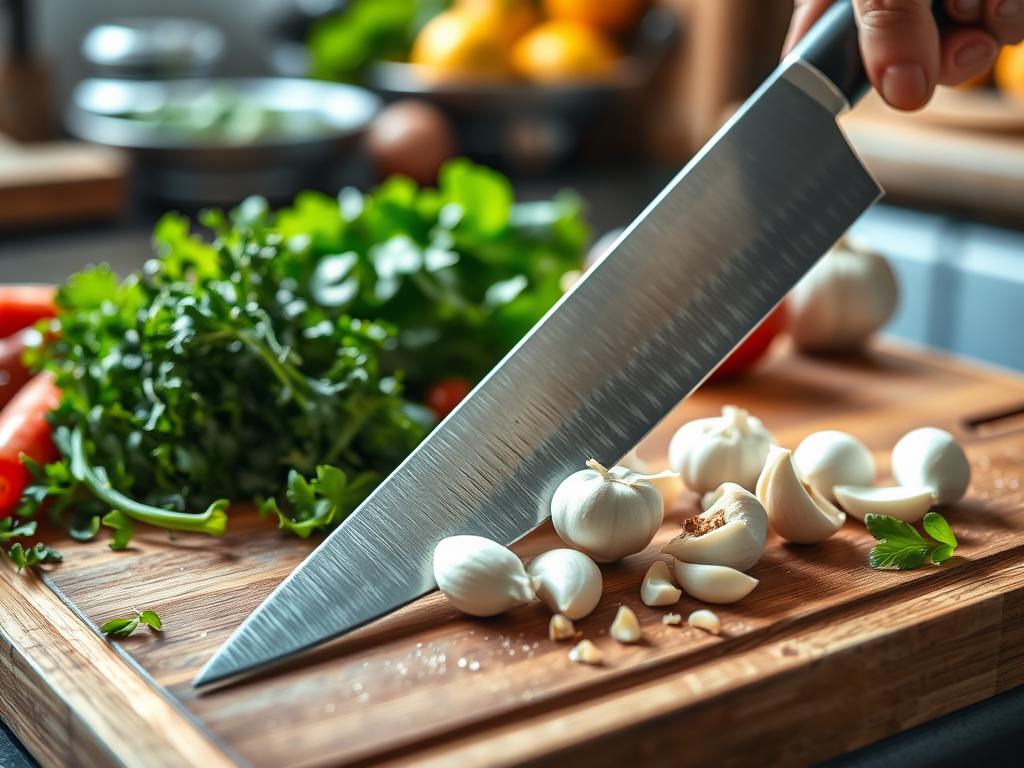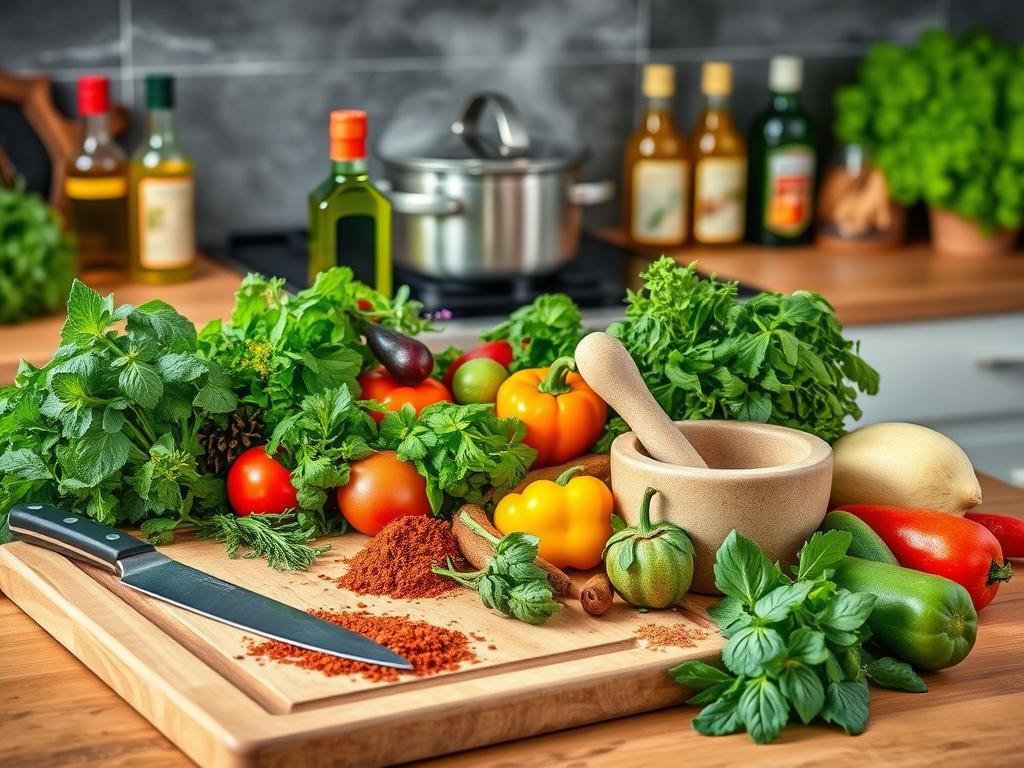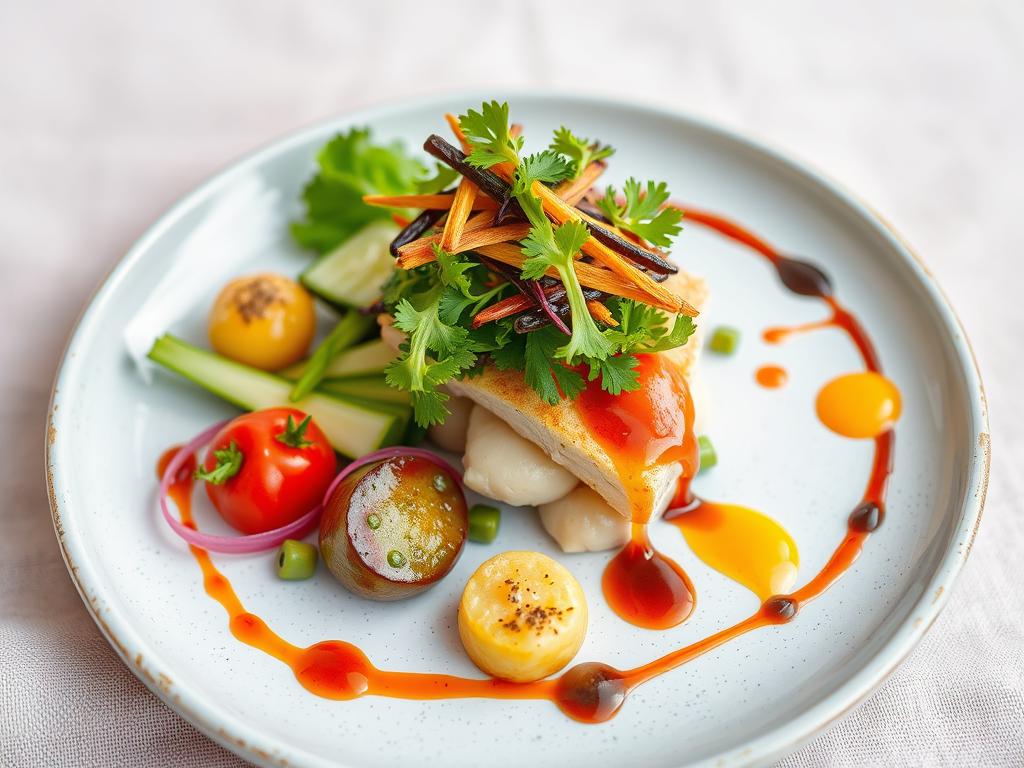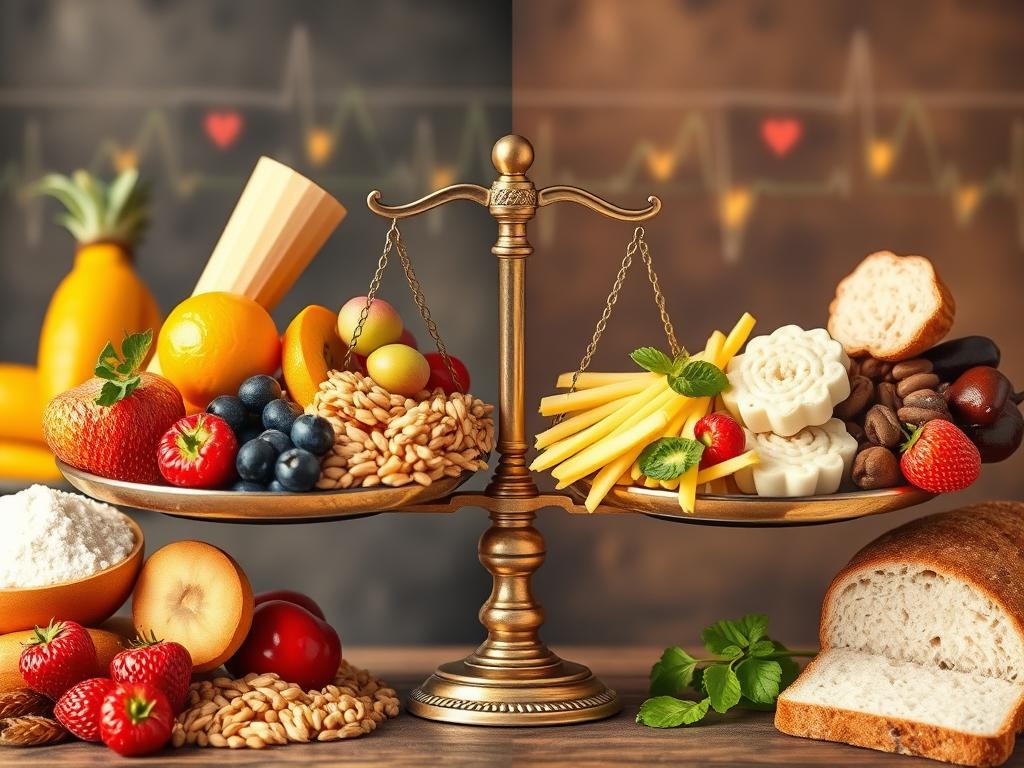Have you ever stood in a kitchen, surrounded by the aroma of spices, the sizzle of ingredients meeting a hot pan, and thought, “Could I really cook like a professional chef?” For many, that moment begins a transformative journey. It’s not just about following a recipe; it’s about engaging with the process, experimenting with flavors, and ultimately embracing the art of chef-inspired cooking.
The culinary world today is rich with resources—whether you’re drawn in by a dynamic online class, captivating cooking tutorials, or comfortable gatherings with friends over a shared love of food. Each step toward mastering cooking techniques is also a step toward discovering a newfound confidence in your culinary abilities.
As you set out on your adventure to learn how to cook like a chef, remember that practice is key. Every great chef has begun just like you, and with every attempt—whether met with success or the occasional kitchen mishap—you will grow more skilled and equipped to create delightful dishes in your home. Now, let’s delve into the essentials you need to get started in your culinary journey.
Key Takeaways
- Practice is key to becoming confident in the kitchen.
- Utilize online platforms for a plethora of cooking resources.
- Understand the fundamentals of kitchen tools and terminology.
- Cooking is about exploration; don’t be afraid to experiment.
- Chef-inspired cooking can open a world of culinary delights.
Understanding How to Cook Like a Chef
Beginning your culinary journey can be exciting but may also feel overwhelming at first. To build a solid foundation in Cooking Basics for Beginners, it’s important to familiarize yourself with essential elements that will enhance your cooking experience. This segment will cover the Essential Kitchen Tools you need, clarify Common Cooking Terms, and underscore the Importance of Recipe Reading.
Essential Kitchen Tools for Every Beginner
To start cooking effectively, having the right tools is vital. Here’s a list of some Essential Kitchen Tools every beginner should consider acquiring:
- Chef’s knife: A versatile must-have for chopping and slicing.
- Cutting board: Protects countertops and keeps your workspace organized.
- Measuring cups and spoons: Ensure accurate measurements for your recipes.
- Non-stick skillet: Great for easy cooking and cleaning.
- Stock pot: Best for boiling and making stocks.
With these tools, aspiring chefs can approach recipes with more confidence and clarity. Understanding how to use each tool will lead to better cooking outcomes.
Common Cooking Terms Explained
Familiarity with Common Cooking Terms can prevent confusion and help in executing recipes correctly. Here are a few essential terms to know:
| Term | Definition |
|---|---|
| Simmer | Cooking in liquid just below boiling point, typically around 190 to 205°F. |
| Deglaze | Adding liquid to a pan to loosen and dissolve the browned bits of food. |
| Fold | A gentle mixing technique that incorporates air into a mixture. |
| Julienne | Cutting vegetables into long thin strips. |
Knowing these terms contributes to smoother cooking experiences and successful outcomes, as you can manage the various steps in your recipes easily.
Importance of Recipe Reading
A key aspect of successful cooking lies in understanding the Importance of Recipe Reading. Before starting any dish, it’s beneficial to read through the entire recipe. This acts as a roadmap, providing crucial insights into the necessary steps and ingredients, ensuring you’ll be prepared to take on any culinary challenge.
Begin by gathering your ingredients and equipment as outlined in the recipe, and familiarize yourself with any cooking techniques that will be used. This preparation is essential for preventing mistakes and enhancing your overall efficiency in the kitchen.
For those eager to enhance their skills further, consider exploring various resources. You can delve into cooking classes available in Seattle, Washington D.C., or Fort Lauderdale, or refer to materials like learning to cook with books such as “Salt, Fat, Acid, Heat” by Samin Nosrat. Embrace the journey, and soon, you’ll find the kitchen transforming into your favorite space.
Mastering Knife Skills
Mastering Knife Skills is a vital element for anyone who wishes to enhance their culinary expertise. Understanding how to select the appropriate tools and techniques significantly improves the cooking process. Knowing how to handle knives safely prevents accidents while making the experience enjoyable.
Choosing the Right Knife for the Job
Choosing the Right Knife can transform your cooking experience. Three essential knives for various tasks include:
| Knife Type | Use | Benefits |
|---|---|---|
| Serrated Knife | Cutting bread and tomatoes | Glides through soft surfaces without squishing |
| Chef’s Knife | General chopping and slicing | Versatile, ideal for most kitchen tasks |
| Paring Knife | Peeling and trimming | Perfect for intricate tasks with precision |
Basic Cuts Every Cook Should Know
Basic Cuts play a crucial role in prepping ingredients. Mastering the following six techniques will enhance your kitchen efficiency:
- Chopping
- Dicing
- Slicing
- Julienne
- Mincing
- Chiffonade
Adopting these skills leads to better-tasting meals and a more organized workspace.
Knife Safety Tips
Knife Safety Tips are essential to reduce the risk of injury while cooking. Observing proper grip and finger placement can minimize accidents. A stable cutting board is vital, as instability can lead to slips and cuts. The occurrence rate of kitchen accidents, especially when rushing, highlights the need for awareness in the kitchen. Practicing consistently not only improves your technique but also encourages safety. Remember, sharp knives cut better and are safer than dull ones, so proper maintenance is necessary for optimal performance.

Cooking Methods 101
Understanding various cooking methods forms the backbone of effective meal preparation. Different techniques impart unique flavors and textures to food, making it essential for beginners to grasp the basics of Cooking Methods such as Boiling, Steaming, Sautéing, Roasting, and Baking Basics. Learning how to apply these methods can elevate everyday dishes into culinary delights.
The Difference Between Boiling, Steaming, and Sautéing
Boiling involves cooking food in water or broth at high temperatures, ideal for vegetables and pasta. This method typically results in softer textures. Steaming preserves nutrients and colors by using steam, making it perfect for delicate vegetables and fish. Sautéing, on the other hand, employs a small amount of oil in a hot pan, allowing for browning and layering complex flavors. Each method serves distinct purposes in the kitchen.
How to Roast for Maximum Flavor
Roasting is a dry heat cooking method that enhances the natural sweetness of vegetables and meats. Utilizing high temperatures results in a caramelized exterior that locks in moisture, creating a mouth-watering dish. When roasting, season generously and consider adding aromatics like garlic or herbs to deepen flavors. For a delicious experience, try roasting BBQ chicken drumsticks by following the steps outlined in this guide.
Baking Basics for Beginners
Baking is a precise Cooking Method that relies on exact measurements and temperature controls. From cakes to breads, understanding the fundamentals is essential. Always preheat your oven and use the right bakeware for the best results. A few essential measurements to know include:
| Measurement | Equivalent |
|---|---|
| 1 tablespoon | 3 teaspoons |
| 1 cup | 16 tablespoons |
| 1 egg (cake only) | 2 tablespoons mayonnaise |
| 1 cup sugar | 1 cup brown sugar or 1 cup corn syrup (adjust liquid) |
| 1 cup milk | ½ cup evaporated milk + ½ cup water |
Flavoring Your Dishes
The art of flavoring your dishes revolves around understanding how to effectively use herbs and spices. These ingredients can transform a mundane meal into an extraordinary feast. Whether you are enhancing a simple dish or crafting a complex gourmet experience, knowing the role of various herbs and spices can elevate your cooking significantly.
The Role of Herbs and Spices
Herbs and spices serve as flavor enhancers that define a dish’s character. The right combination can transform flavors dramatically. Fresh herbs, such as basil and cilantro, impart brightness, while spices like cumin and nutmeg add warmth and depth. Explore different combinations to discover unique tastes that resonate with your culinary style. For more inspiration on integrating various flavors, consider exploring opportunities to include unique ingredients like exotic fruits in your dishes.
Balancing Sweet, Sour, Salty, and Bitter
Balancing flavors is essential in cooking. Start with salt, a critical seasoning, which enhances the natural flavors present in your dish. Understanding the relationship between under-salting and over-salting is key; add salt gradually while tasting to achieve a well-seasoned result. Introducing acidity through citrus juices or various types of vinegar not only brightens a dish but prevents it from tasting flat. Another tip is to use sugar sparingly to balance acidity, especially in sweet-and-sour dishes.
Creating Your Own Marinades
Creating marinades offers an excellent way to infuse flavors into meats and vegetables. Begin with a base that includes oil, an acid like vinegar or citrus juice, and a mix of herbs and spices. Experimentation is crucial; try incorporating elements like garlic, ginger, or even soy sauce to develop exciting new flavor profiles. Letting your marinades rest for a while allows flavors to meld, resulting in a more robust taste. The world of Flavoring Your Dishes opens up with these techniques, inviting creativity and exploration into your culinary endeavors.

Preparing Fresh Ingredients
Utilizing fresh ingredients plays a pivotal role in delivering outstanding flavor and nutritional value in home-cooked dishes. A keen understanding of selecting fresh produce ensures that every meal is both vibrant and healthful. Knowledge of proper food storage techniques can significantly reduce spoilage, allowing you to enjoy your ingredients for longer. This section will dive into how to select high-quality produce, effective food storage practices, and the essential steps for washing vegetables to enhance your cooking experience.
How to Select Fresh Produce
When it comes to selecting fresh produce, look for vibrant colors and firm textures. This indicates quality and freshness. Here are some tips:
- Inspect the skin of fruits and vegetables for blemishes or signs of spoilage.
- Check for a sweet aroma, especially when it comes to fruits.
- Visit local farmer’s markets for the freshest and most seasonal options.
Proper Food Storage Techniques
Learning effective food storage techniques is essential for preserving the quality of your ingredients. Here are some helpful practices:
- Store vegetables in the crisper drawer of your fridge to maintain freshness.
- Use breathable bags for herbs to extend their lifespan.
- Keep fruits that emit ethylene gas separate from others to prevent spoilage.
Washing and Cutting Vegetables
Washing vegetables correctly not only removes dirt but also eliminates harmful residues. Follow these easy steps for optimal results:
- Rinse vegetables under cold water to remove dirt.
- Use a vegetable brush for firm produce, like potatoes and carrots.
- Cut vegetables evenly to ensure uniform cooking.
| Type of Produce | Freshness Indicators | Storage Tips |
|---|---|---|
| Leafy Greens | Vibrant color, crisp texture | Wrap in damp paper towels and store in a sealed bag |
| Tomatoes | Soft, plump feel, fragrant | Store at room temperature away from sunlight |
| Root Vegetables | Firm texture, smooth skin | Keep in a cool, dark place |
Implementing these strategies will empower you in your cooking journey and significantly enhance your dishes. Focusing on Preparing Fresh Ingredients is a step toward culinary excellence.
Plating Like a Pro
Mastering the art of plating can transform an ordinary meal into a feast for the eyes. Thoughtful plating techniques enhance the visual appeal of dishes, making them more enticing. By introducing various elements such as color and garnish, any dish can stand out, ensuring a delightful dining experience.
Basic Plating Techniques for Visual Appeal
Understanding fundamental plating techniques is essential for showcasing your culinary creations. Arranging food on the plate thoughtfully can enhance presentation without overshadowing the ingredients. Consider these factors for effective plating:
- Color: Use contrasting hues to create visual interest.
- Arrangement: Place food in a manner that draws the eye.
- Balance: Maintain a harmonious look by distributing items evenly.
- Texture: Combine different textures for a more dynamic plate.
- Ease of eating: Ensure the dish is accessible for diners.
Using Color to Elevate Your Dish
Utilizing color in dishes significantly impacts perception. Food is deemed 29% tastier when presented well. Brightly colored fruits and vegetables not only enhance visual appeal but also indicate freshness and quality. Boiling and steaming vibrant vegetables maintains their rich colors. Roasting further adds warmth and flavor, particularly to vegetables like carrots and potatoes. Searing proteins can produce a captivating brown crust, while fried items deliver a golden hue.
Common Garnishes to Enhance Presentation
Incorporating garnishes for presentation elevates the overall experience. Edible flowers, fresh herbs, citrus zest, and flavored oils provide not only beauty but also complementary flavors. Smaller portion sizes make styling easier while ensuring that each item on the plate is highlighted. Opt for white or colored plates that match the theme of the dish to allow your food to take center stage. Keeping your plates at the appropriate temperature enhances both appearance and flavor.

With over 12,000 searches for dinner party meals each month in the U.S., home cooking is becoming increasingly popular. Individuals aspire to elevate their skills, as 34% wish to cook more often at home, benefiting from healthier ingredients and better portion control. Proper organization and preparation play vital roles in successful cooking and plating, making each meal not just a dish but an artwork.
| Technique | Description | Color Impact |
|---|---|---|
| Searing | Creates a crispy, brown outer layer on proteins. | Offers visual contrast against lighter foods. |
| Roasting | Adds warmth and rich flavors to vegetables. | Brings out natural colors and enhances their appeal. |
| Frying | Provides a golden hue when executed well. | Brightens up the plate, making it look more inviting. |
| Garnishing | Enhances flavor and aesthetics with decorative elements. | Introduces fresh colors, elevating the dish’s appeal. |
For more ideas on incorporating healthful ingredients, consider exploring various cabbage recipes, which can boost digestion and immunity while maintaining high nutritional value.
Tips for Cooking Meat and Seafood
Cooking meat and seafood requires an understanding of various factors, including cooking times, temperatures, and appropriate cooking techniques. By mastering these elements, you can create delicious and perfectly cooked dishes that highlight the unique flavors of each ingredient.
Understanding Cooking Times and Temperatures
Proper cooking times and temperatures are essential for achieving excellent results while cooking meat and seafood. Fresh fish should ideally be cooked within 24 hours to retain its texture and flavors, while most fish may lose their desirable qualities after 2-3 months in the freezer. Lean fish, like flounder and cod, are best prepared using pan-frying or poaching techniques.
Techniques for Perfectly Cooked Steak
When it comes to cooking meat, high-heat methods are most effective. Steaks such as porterhouse, prime rib, and sirloin benefit from grilling, broiling, and sautéing. It’s important to monitor steak closely, aiming for a beautifully browned crust while maintaining a juicy interior. For more fibrous cuts like chuck or shoulder, slow cooking or braising will yield tender results.
Seafood Cooking Essentials
In Seafood cooking, different techniques play a crucial role. Moist-heat methods such as steaming, shallow poaching, and simmering can yield tender, flavorful dishes without making seafood tough or rubbery. Moreover, once the color transitions from raw to cooked, seafood must be removed from the heat. Fatty fish can be grilled or broiled effectively, while leaner varieties can thrive in lighter preparations like sautéing or pairing with lemon butter sauce.
| Ingredient | Best Cooking Method | Cooking Time |
|---|---|---|
| Steak (e.g., Porterhouse) | Grilling/Broiling | 8-12 minutes |
| Lean Fish (e.g., Cod) | Pan-frying/Poaching | 5-7 minutes |
| Fatty Fish (e.g., Salmon) | Grilling/Broiling | 6-10 minutes |
| Poultry (e.g., Chicken Breast) | Grilling/Sautéing | 10-15 minutes |
| Pork (e.g., Loin) | Grilling/Braising | 15-20 minutes |
Advanced Techniques to Learn Next
Once you’ve mastered the fundamentals of cooking, diving into advanced cooking techniques can elevate your culinary creations to new heights. Understanding the nuances of Sous Vide cooking can be particularly beneficial, as this method involves sealing ingredients in a plastic bag and immersing them in a water bath to cook them slowly at precise temperatures. The result is an extraordinary tenderness and uniform cooking that traditional methods often can’t achieve.
Sous Vide Cooking for Beginners
Sous Vide cooking is a fantastic introduction to advanced techniques. By maintaining consistent, low temperatures, you can transform tough cuts of meat into succulent masterpieces. Coupled with flavor-infused marinades or spices, this technique can truly enhance your meals.
The Art of Emulsification in Sauces
Emulsification is essential for creating rich, velvety sauces that can transform a simple dish. Techniques like whisking oil into vinegar or using a blender can create creamy salad dressings and sauces. Understanding how to balance these ingredients will allow you to craft sauces that add depth and texture to any plate.
Understanding Fermentation and Pickling
Lastly, exploring fermentation and pickling is a rewarding way to expand your flavor repertoire. These processes not only preserve ingredients but also enhance their taste through natural fermentation. Cultured vegetables, homemade sauerkraut, or quick pickles can bring a refreshing zest to your dishes, encouraging creativity in your kitchen endeavors.










